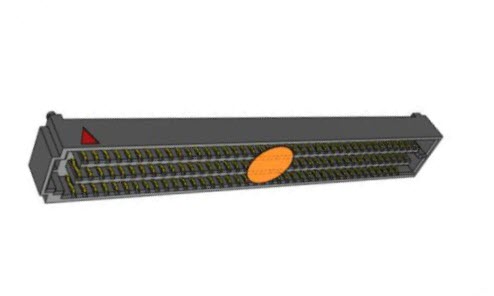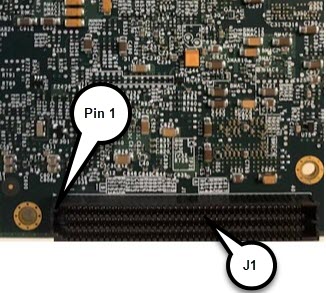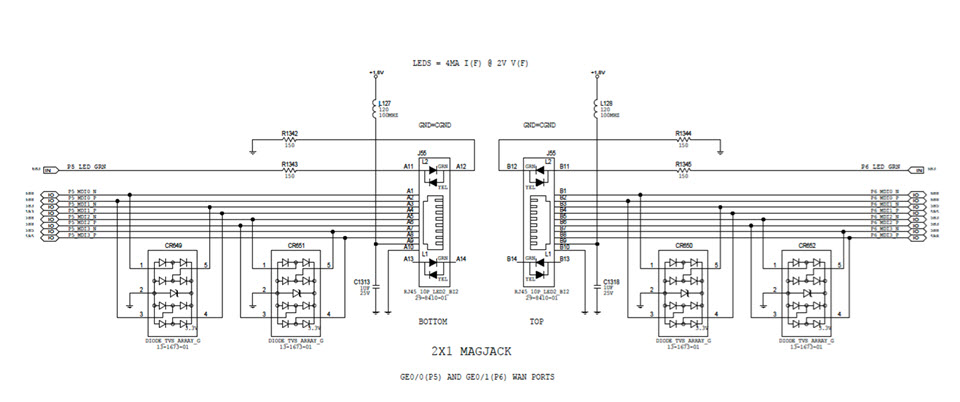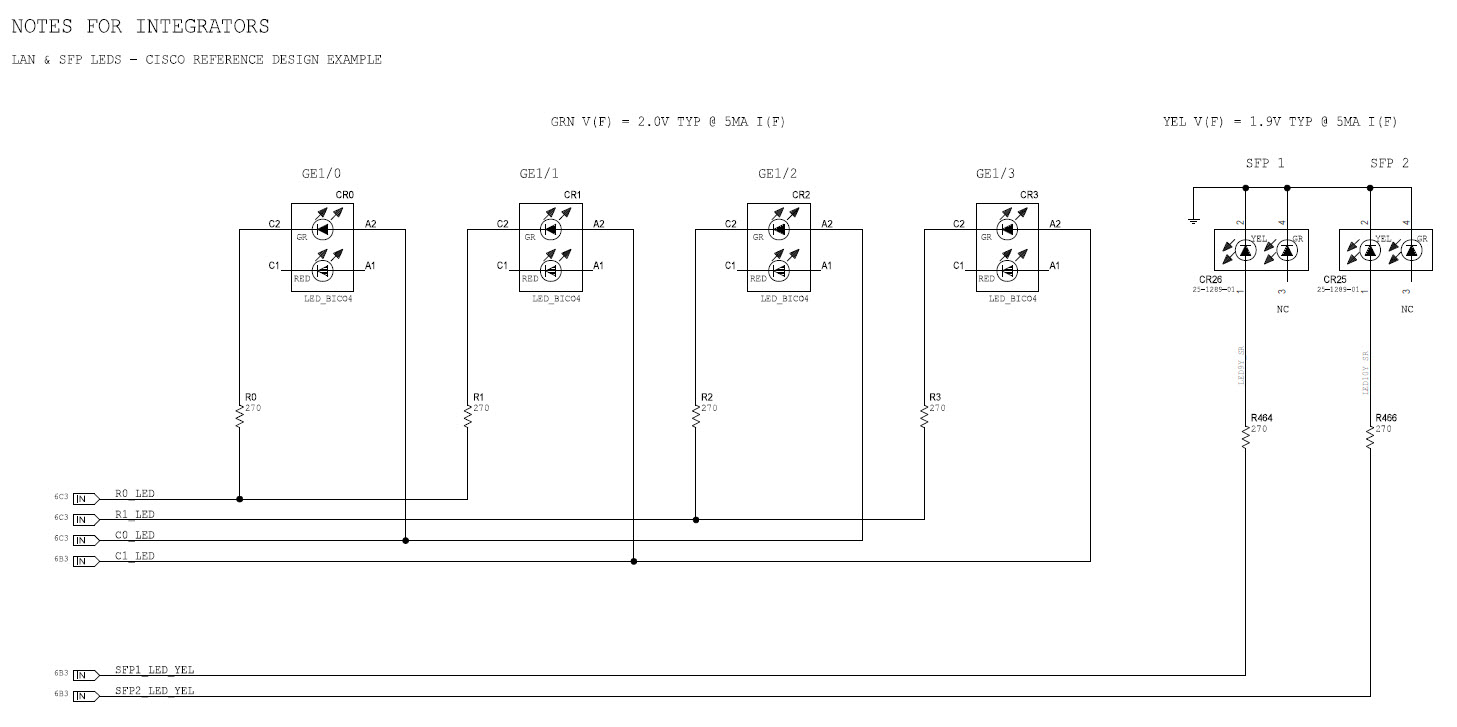BTB Interface Connector Overview
The board-to-board (BTB) connector provides the power input and the interface to external devices. This connector belongs to the SEARAY® Connector Series from SAMTEC. Depending on the mating connector selected by the integrator, the series supports a stacking height from 7mm to 18mm (not all increments are supported). The BTB connector on the ESR is the SAMTEC SEAF-40-05.0-S-06-2-A-K 240-pin female connector.
Complete information on the connector can be found at the Samtec website:
https://www.samtec.com/connectors/high-speed-board-to-board/high-density-arrays/searay

 Note |
This figure is a partial view of the PCB to highlight the connector. |

The following table lists the mating connector (SEAM lead style) options that are available to achieve specific stacking heights when coupled with the ESR (-05.0 SEAF lead style).
|
Mating Connector SEAM Lead Style |
ESR Connector J1-05.0 SEAF Lead Style |
|---|---|
|
-02.0 |
7mm |
|
-03.0 |
8mm |
|
-03.5 |
8.5mm |
|
-05.5 |
N/A |
|
-06.5 |
11.5mm |
|
-07.0 |
12mm |
|
-09.0 |
14mm |
|
-11.0 |
16mm |
|
-13.0(not tooled) |
18mm |


 Feedback
Feedback